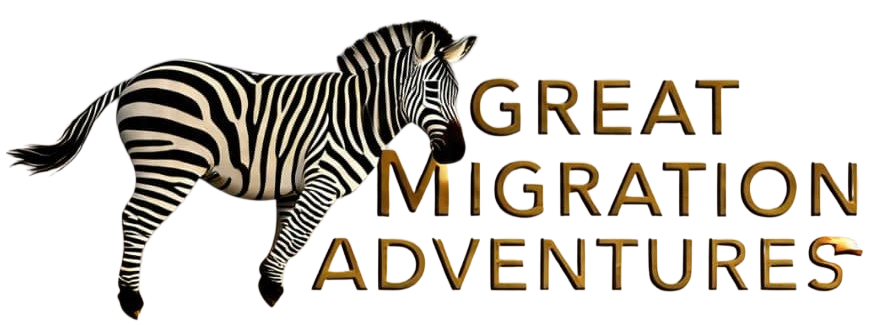For wildlife photographers, Serengeti National Park is nothing short of a dream come true. With its sprawling landscapes, iconic wildlife, and ever-changing light, the Serengeti offers a breathtaking canvas that attracts photographers from around the globe. Whether you’re capturing the raw intensity of the Great Migration, the stealthy elegance of a stalking lioness, or the serene beauty of a sunset over the savannah, the Serengeti provides endless opportunities for stunning shots.(Wildlife Photographer’s Paradise)
In this guide, we’ll explore why Serengeti National Park is a wildlife photographer’s paradise, the best spots and times for photography, and tips to help you capture the most unforgettable moments on your safari.
Why Serengeti National Park is a Photographer’s Dream
Serengeti National Park covers nearly 15,000 square kilometers (5,700 square miles) of diverse habitats, including expansive grasslands, acacia woodlands, kopjes (rocky outcrops), and riverine forests. This variety of landscapes not only provides rich backgrounds for wildlife photography but also supports an incredible diversity of animals, making it one of the best places in Africa for capturing iconic wildlife images.
From the open plains where herds of wildebeest, zebras, and gazelles roam freely, to the hidden corners where leopards and lions prowl, the Serengeti is filled with photographic opportunities at every turn. And when you add the magical golden light of an African sunrise or sunset, it’s no wonder the Serengeti has become a favorite destination for both professional and amateur photographers alike.(Wildlife Photographer’s Paradise)
Diverse Wildlife Encounters
The Serengeti’s rich biodiversity means that wildlife photographers have a chance to capture some of Africa’s most iconic animals in their natural environment. The park is home to the Big Five—lions, leopards, elephants, buffaloes, and rhinos—as well as other photogenic species like cheetahs, giraffes, zebras, and hippos. Whether you’re zooming in on the intense stare of a predator or framing a herd of elephants silhouetted against the sunset, the Serengeti’s wildlife will provide you with captivating subjects throughout your trip.
Endless Horizons and Dramatic Skies
The Serengeti’s open plains create stunning compositions with their endless horizons, where animals appear as tiny dots in a vast, sweeping landscape. These expansive views, combined with the ever-changing skies, allow for dramatic photography, particularly during sunrise and sunset. The intense colors and shifting clouds often create the perfect backdrop for silhouette shots, making it easy to produce striking images even in low light.
The Great Migration: Nature’s Greatest Show
The Great Migration, one of the world’s most remarkable wildlife events, is the crown jewel for wildlife photographers visiting the Serengeti. Each year, over 1.5 million wildebeests, accompanied by hundreds of thousands of zebras and gazelles, embark on a journey across the plains in search of greener pastures. This massive movement of animals creates opportunities for dynamic and dramatic photographs, particularly during the river crossings, where wildebeests and zebras risk their lives to cross crocodile-infested waters.(Wildlife Photographer’s Paradise)
Capturing the chaos and intensity of a river crossing is an experience like no other, with the sheer number of animals, the dust rising from their hooves, and the tension of predators lurking nearby. It’s the kind of photographic opportunity that every wildlife photographer dreams of.
Best Times and Locations for Photography in the Serengeti
Timing is everything when it comes to wildlife photography, and the Serengeti offers excellent opportunities throughout the year. However, certain times and locations stand out for photographers seeking to capture the park’s most iconic images.
Best Time for Photography: Golden Hours and Migration Season
The best time for wildlife photography in the Serengeti is during the golden hours—early morning just after sunrise and late afternoon before sunset. During these times, the soft, warm light bathes the landscape, casting long shadows and creating a golden glow that enhances the beauty of your images.
For those interested in photographing the Great Migration, the best time to visit is between July and October, when the herds are crossing the Mara and Grumeti Rivers in the northern Serengeti. The drama of the river crossings and the abundance of wildlife make this period ideal for capturing action-packed shots.
If you’re more interested in predator activity and calving season, the southern Serengeti and Ndutu region are prime locations between December and March, when thousands of wildebeest calves are born, attracting predators such as lions, leopards, and hyenas.
Iconic Photography Locations in the Serengeti
The Serengeti offers numerous locations that are ideal for photographers, each with its own unique scenery and wildlife.
- Central Serengeti (Seronera): Known for its high concentration of predators, the Seronera region is a favorite spot for photographers looking to capture big cats like lions and leopards. The mix of grasslands and riverine forests provides a rich diversity of photographic opportunities.
- Northern Serengeti: The northern part of the Serengeti is where the dramatic river crossings take place during the Great Migration. This region offers incredible action shots as wildebeests and zebras cross the Mara River, often pursued by crocodiles.
- Western Corridor: This area, along the Grumeti River, is another fantastic location during the migration season. The river attracts a wide variety of wildlife, making it a great place for photographing everything from elephants to hippos.
- Southern Serengeti and Ndutu: During the calving season (December to March), the southern Serengeti and Ndutu region are ideal for capturing heartwarming moments of newborn wildebeests and zebras, as well as predators in action.
Kopjes: Unique Photographic Opportunities
The kopjes, or rocky outcrops scattered across the Serengeti, provide photographers with some of the most iconic backdrops in the park. These ancient granite formations are not only beautiful in their own right but also serve as resting spots for lions, leopards, and other predators. The sight of a lion pride lounging on a kopje under the African sun is a classic Serengeti image that every wildlife photographer aims to capture.

Wildlife Photography Tips for Serengeti National Park
Capturing the best wildlife photos in the Serengeti requires preparation, patience, and a few key techniques. Here are some tips to help you get the most out of your photographic safari:
1. Bring the Right Equipment
Having the right gear is essential for wildlife photography in the Serengeti. A telephoto lens (200-400mm) is crucial for getting close-up shots of distant animals without disturbing them. A wide-angle lens is also useful for capturing the vast landscapes and dramatic skies. Don’t forget to bring extra batteries and memory cards—wildlife encounters can be fast and unpredictable, so it’s best to be prepared.
2. Shoot During Golden Hours
The best light for photography is during the golden hours—shortly after sunrise and just before sunset. The soft, warm light during these times creates a beautiful atmosphere that enhances your images. The midday sun can be harsh, so focus on portrait-style shots during this time or switch to backlit or silhouette photography.
3. Use Fast Shutter Speeds for Action Shots
Wildlife can move quickly, especially during the Great Migration or when predators are on the hunt. Using a fast shutter speed (1/1000s or faster) will help you capture sharp, detailed images of fast-moving subjects like running wildebeests, leaping predators, or birds in flight.
4. Patience is Key
Wildlife photography requires a lot of patience. Animals don’t always appear on command, and sometimes you may need to wait for hours for the perfect shot. However, the reward is worth the wait—capturing a rare moment, such as a lion hunt or a mother elephant with her calf, can make your entire safari unforgettable.
5. Focus on Storytelling
Some of the most powerful wildlife photos are those that tell a story. Whether it’s a mother lion protecting her cubs, a herd of elephants walking through the savannah, or the dramatic chaos of a river crossing, focus on capturing moments that convey emotion and narrative.
Best Wildlife Subjects for Photography in the Serengeti
The Serengeti offers an incredible array of wildlife subjects for photographers. Here are some of the best animals to focus on during your safari:
- Lions: Whether they’re hunting, resting, or playing with their cubs, lions are one of the most photogenic animals in the Serengeti.
- Leopards: These elusive cats are often seen lounging in trees, making for beautiful, serene images.
- Cheetahs: Capture the speed and grace of cheetahs as they hunt on the open plains.
- Elephants: Photographs of elephant herds moving through the landscape are iconic and convey the majesty of the Serengeti.
- Wildebeests and Zebras: During the migration, these animals provide dynamic action shots as they traverse the plains and cross rivers.
- Birds: From vultures and eagles to the colorful lilac-breasted roller, the Serengeti is home to over 500 bird species, offering ample opportunities for bird photography.
FAQs(Wildlife Photographer’s Paradise)
What is the best time to photograph the Great Migration?
The best time to capture the Great Migration is from July to October during the river crossings in the northern Serengeti. The calving season in the southern Serengeti (December to March) is also a great time for photography.
What camera gear should I bring for a Serengeti safari?
Bring a telephoto lens (200-400mm) for wildlife shots, a wide-angle lens for landscapes, and plenty of extra batteries and memory cards. A sturdy tripod or beanbag can also help stabilize your camera for sharper images.
Is it possible to do night photography in Serengeti National Park?
Some lodges and camps offer night game drives, which provide opportunities for night photography. You can capture nocturnal animals like lions and leopards hunting under the stars.
How long should I stay in Serengeti National Park for photography?
For the best wildlife photography experience, plan to stay in the Serengeti for at least 4-5 days. This gives you enough time to explore different regions of the park and capture a variety of wildlife encounters.
Serengeti National Park is a wildlife photographer’s paradise, offering breathtaking scenes of nature’s raw beauty at every turn. From the drama of the Great Migration to the intimate moments shared between predator and prey, the Serengeti provides endless opportunities for capturing unforgettable images. Whether you’re an amateur photographer or a seasoned professional, a safari in the Serengeti will leave you with a portfolio filled with stunning shots and memories of a lifetime.










